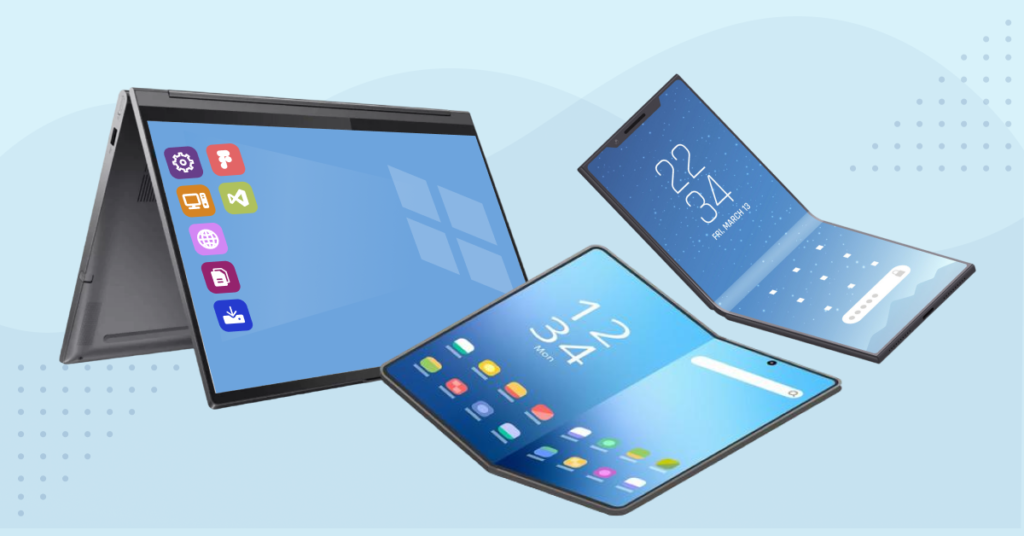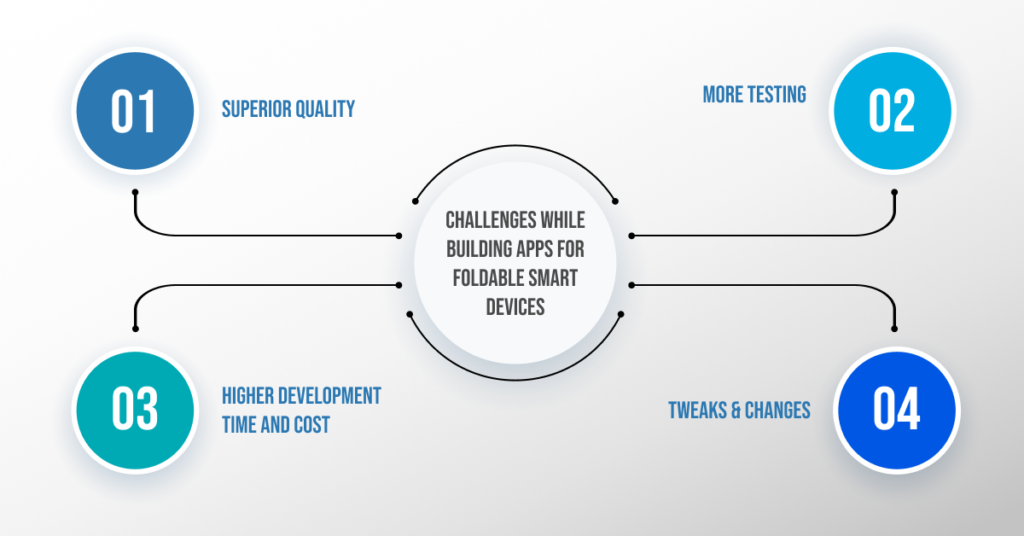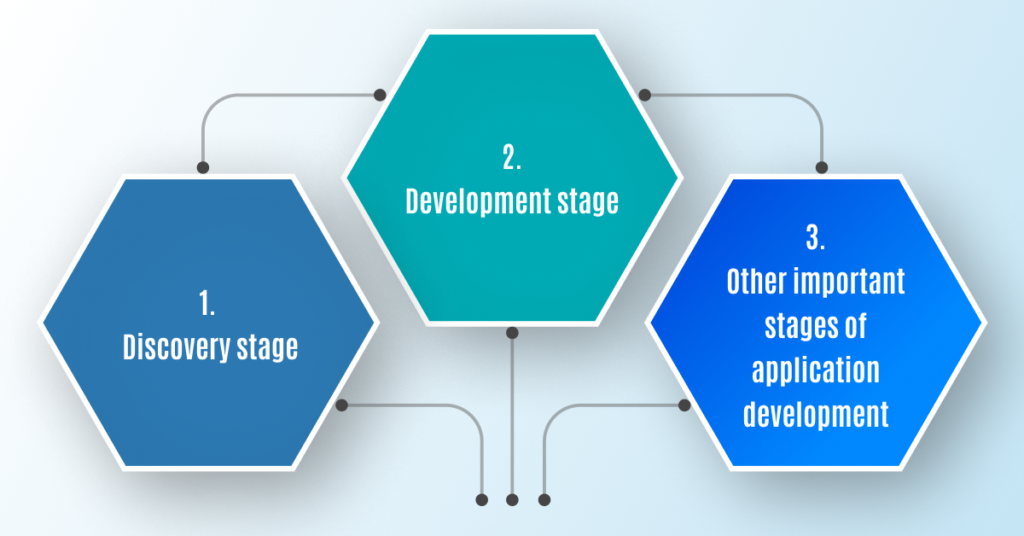
How to Design and Develop Apps for Foldable Devices?
-
By Amardeep Singh Sandhu
-
12th October 2022
Foldable devices and smartphones are new players in the global smartphone industry. But they have started making their separate unique identity in the market and users’ minds.
These foldable devices offer valuable features and functionalities to their customers.
Now, it’s challenging for many smartphone experts to look for different ways to design and develop apps for foldable smartphones.
According to some experts, it is estimated that by 2023 foldable phones, 30 million units may be available in the global market. Another online source states that 75.6 million foldable smartphones will be shipped in the year 2025. This makes app development for foldable devices more important.
If you are also looking for the right solution to help you design and develop apps for foldable devices, this blog is for you.
Here’s What’s You Will Learn:
– What are foldable devices?
– How does it impact app development?
– Challenges you can face while building apps for foldable smart devices.
– Important things to keep in mind for foldable app development.
– Complete guide on app development.
Let us dive deeper into the blog and explore app development for these appealing foldable smart devices! But first, let us understand what foldable smart devices are.
What are Foldable Devices?

You might have heard the term “foldable phone” in the year 2008 when Nokia launched the Morph concept. The peculiar feature of flexible OLED displays is that they can be folded and turned into a double-size full-screen display.
Foldable smartphones and devices offer users a more immersive experience. One of the most brilliant examples of foldable devices is Samsung Galaxy Fold. It is also available in the market for purchase.
Let us take you one step ahead to understand how foldable devices impact app development.
How do Foldable Smart Devices Impact App Development?
From users’ perspective, the foldable technology might seems exciting. But many businesses do not clearly understand how the foldable smart devices technology will impact mobile app development. So let’s check out some of the major challenges and benefits that foldable brings with them for developers.
Large screen experience : The primary motive of bringing foldable devices is to offer users a great viewing experience with a large screen. Now two screens can turn into a single big screen.
Small or large screen confusion : Today, many users are confused between small and big screen smartphones. But with foldable phones, they get both options in one device.
New content : The availability of an additional screen helps content creators can release a new form of content.
More interesting features : Modern smartphones have a limited screen size, a barrier to some necessary features. But with foldable devices, it is now easy to create multi-screen applications.
Challenges While Building Apps for Foldable Smart Devices

Whether it’s web development or app development, there are always some challenges that every developer has to surpass. The same is in the case of foldable app development. Therefore consider the following factors that help to build a high-quality foldable application:
Superior Quality :
Foldable app development is not like walking in a park. First, a developer must remember that foldable devices have multiple orientations and different aspect ratios than regular smartphones.
While users expect that they will have a glitch-free experience while using your developed application. Therefore you need to understand how to develop applications for foldable devices. Otherwise, your app will sink.
More Testing :
Foldable devices have different use cases and scenarios. Therefore to ensure that they are bug-free, a developer needs to test every aspect and possible usage cases. Furthermore, the testing should be done on multiple window sizes.
Higher Development Time and Cost :
If you have decided to design and build an application for a foldable device, then you are taking your application into a new space. You must design and develop your app for multiple modes and test it in multiple cases. Thus, you must spend more time and money on development and testing.
Tweaks & Changes :
Once you have launched your application on the Google Play Store, you need to make numerous changes based on user feedback. This is important if your app stays longer in the market and on users’ phones.
Important Things to Keep in Mind for Foldable App Development
Two screen states :
Folded and unfolded screen – these are the two states of the screen.
In its folded state, the smartphone looks like other regular phones. So, there is no difference in how users interact with the device. However, while in an unfolded state, the phone turns into a big-screen device, like a tablet. Thus you need to design your app to operate on both screen states.
Multi-window state :
As we discussed earlier, the main purpose behind introducing foldable is to provide users with a larger screen and advanced multitasking. Users might often use the screen for a few multi-windows apps. So you have to design and develop the app according to it.
Screen continuity :
If a user moves from folded to unfolded state, the app should automatically and flawlessly adjust itself. The app must resume from the same location in the previous state.
Complete Guide on App Development

Here we have listed the main stages of foldable app development.
A) Discovery stage
It is important for the future success of the foldable application. It saves time and money. The Discovery stage helps you to identify the needs, technical requirements, and the development process. Key deliverables of the discovery stage include:
– Market analysis
– Competitor analysis
– Functional specifications
– Product Backlog
– UX wireframes
– UI mockups
– Branding elements (e.g., logo, unique icons, etc.)
– Illustrations and animations
B) Development stage
The development stage includes coding the application. It is usually divided into three phrases:
Development : Write your application’s code base, integration with API, and other third-party solutions or methods.
Testing & QA : a vital part of any app development that ensures the application’s functionality is according to guided guidelines.
Deployment, ongoing support, and support : once the app’s released to the market, developers or IT vendors need to continue working on the application to upgrade its performance and functionality.
C) Other important stages of application development
– Market research and competitor analysis
– App concept finalization
– App monetization strategy
– Picking the right IT development partner
– Custom UX/UI for foldable application
– Application development process
– Comprehensive marketing planning
Sum up
Foldable devices are constantly growing their roots in the smartphone industry. Experts assume that this technology has a great capability to change the future of smartphone looks. Now you know you can create an application for foldable smartphones and devices. So, buckle up your belt as it’s time to apply the gained knowledge to practical.
Recent Articles
-

Unity vs Unreal Engine 5: Which is Better?
-

Non-Negotiable Tips for Developing a P2P Lending Platform
-

The 8 Leading Cross-Platform App Development Frameworks You Should Know
-

Step-by-Step Guide: How to Build a dApp on Ethereum with Ease
-

Why Does Your Business Need Blockchain Development Company’s Expertise?

Amardeep Singh Sandhu
 12th October 2022
12th October 2022